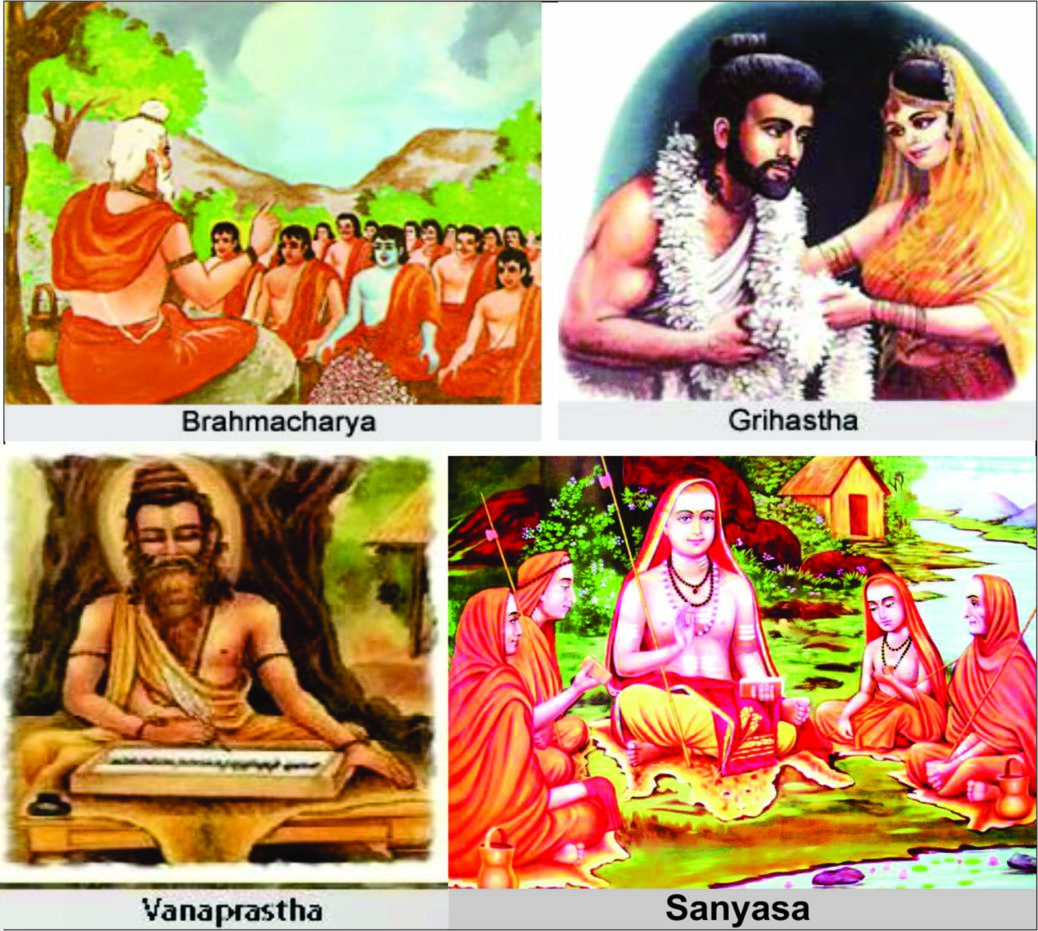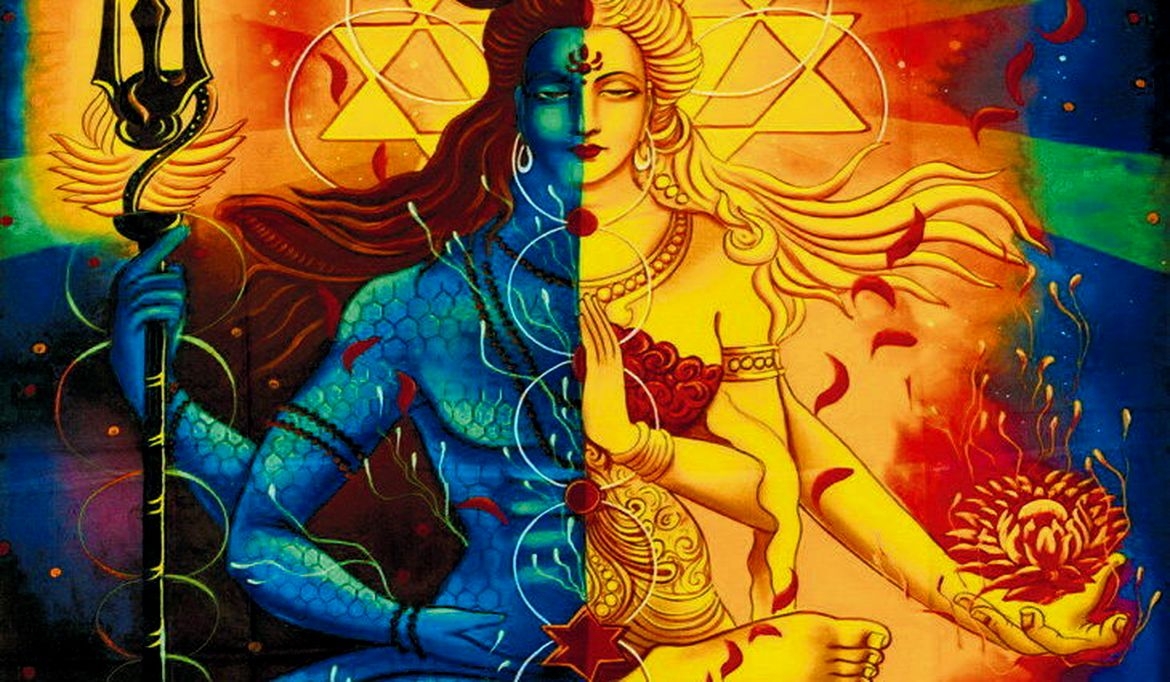The Hindu social system is a complex framework that has been established for centuries in India. It is structured around the principles of Varna-Ashrama-Dharma and Purushartha. These principles provide guidelines for living a fulfilling and meaningful life, in accordance with the laws of the universe. In this blog post, we will explore the different aspects of the Hindu social system and the role of these principles in shaping it.
Varna-Ashrama-Dharma: The Basic Principle of Hindu Social System
The Hindu social system is based on the concept of Varna-Ashrama-Dharma. Varna refers to the four divisions of society based on labor and inheritance. The four Varnas are:
- Brahmins: The priestly class
- Kshatriyas: The warrior class
- Vaishyas: The merchant class
- Shudras: The servant class
Ashrama, on the other hand, deals with the nature of training and living in four stages of life. These four stages are:
- Brahmacharya: The stage of celibacy and learning
- Garhastha: The stage of householder and family life
- Vanaprastha: The stage of retreat and contemplation
- Sanyasa: The stage of renunciation and detachment
Together, Varna and Ashrama propound a system referred to as Varna-Ashrama-Vyavastha, which defines the roles and responsibilities of individuals in society. Dharma, which means righteous action or honest conduct, is the code of conduct that is expected of every individual in their respective Varna and Ashrama.
Purushartha: The Four Goals of Human Life
Purushartha is a Sanskrit word that means “object of human pursuit” or “goals of man”. It refers to the four proper goals or aims of human life. The four Purusharthas are:
- Dharma: Dharma simply means the ultimate law that keeps the universe together, that keeps the universe together, that keeps the universe in harmony, in accord; the norm that makes the universe a cosmos and not a chaos.
- Artha: Learning to manage debt, taking appropriate action (not procrastinating) and fulfilling material responsibilities, are all Artha lessons.
- Kama: Kama, Lust is greed, lust is attachment, lust is possessiveness. Love needs no possession, love knows no attachment, because love is not greed. No sexual experience can give you that beauty that will come if you watch your lust and through watchfulness the lust disappears. Then a silence comes to you which is virgin, which belongs to the beyond, which belongs to the other shore.
- Moksha: Moksha, Liberation is not of the “I” but from the “I.” You are to be liberated from yourself. In liberation you will not find yourself at all; you will be gone for ever. All the religions say, “Liberate yourself from your attachments.” Only Zen has the strange courage to say, “Liberate yourself from yourself!”
The pursuit of these four goals is considered essential for leading a fulfilling and meaningful life. Depending upon one’s deeds or karma, one is able to reach the stage of Moksha or liberation. Moksha is the ultimate goal of any human, and it can be achieved through good karma and the pursuit of righteousness. The stage of Moksha or liberation is a term used to describe the end of the cycle of birth and rebirth. The cycle of birth and rebirth is known as samsara.
The Four Ashramas: Resting Places on the Way to Final Liberation
The four Ashramas are regarded as resting places or stages during one’s journey on the way to final liberation, which is the ultimate aim of life. Each Ashrama relates to a different stage of life and has specific goals associated with it. Let us explore each of these four Ashramas in detail.
Brahmacharya: The Stage of Celibacy and Learning
Brahmacharya is the first stage of life, where one focuses on learning and education. This stage is characterized by celibacy, conserving energy in order to transcend energy and strict adherence to rules and regulations. The goal of this stage is to acquire knowledge and skills that will help in fulfilling the responsibilities of the next stage of life.
Garhastha: The Stage of Householder and Family Life
The second stage of life, Garhastha, refers to the stage of the householder and family life. This stage begins when a person gets married and is expected to lead a life of responsible and productive activity in the world. The duties of this stage include pursuing a career, raising a family, and fulfilling social and familial obligations. This stage is considered to be the busiest and most challenging of all the four stages of life, as it involves balancing material and spiritual pursuits.
In this stage, a person is expected to manage debt, taking appropriate action (not procrastinating) and fulfilling material responsibilities, and to support their family and dependents. The pursuit of artha or wealth is considered to be an important aspect of this stage, as it is necessary for the maintenance of one’s family and for fulfilling social obligations. However, this pursuit should be guided by the principles of dharma, which include honesty, integrity, and ethical behaviour.
In addition to pursuing artha, a person in the Garhastha stage is also expected to fulfill their desires or kama in a righteous and ethical manner. This includes satisfying one’s physical, emotional, and intellectual needs, as well as fulfilling one’s duties to one’s spouse and children.
Overall, the Garhastha stage is a time of active engagement with the world, where one learns important life skills, such as managing finances, raising a family, and building relationships. It is a time of balancing material and spiritual pursuits and fulfilling social obligations while upholding the principles of dharma.
Vanaprastha: The Stage of Retreat and Renunciation
The third stage of life, Vanaprastha, refers to the stage of retreat and renunciation. This stage begins when a person’s children have grown up and become independent, and their worldly duties and responsibilities have been fulfilled. At this stage, a person is expected to withdraw from the material world and focus on spiritual pursuits.
The primary focus of this stage is to prepare oneself for the final stage of life, which is Sanyasa or renunciation. A person in the Vanaprastha stage is expected to spend their time in contemplation, meditation, and study of scriptures. They are also expected to practice detachment from material possessions and to live a simple and austere life.
During this stage, a person is encouraged to undertake a pilgrimage or a journey to a holy place to gain spiritual insights and deepen their understanding of the self and the universe. This stage is considered to be a time of transition from material pursuits to spiritual pursuits and a time for spiritual growth and introspection.
Sanyasa: The Stage of Renunciation
The final stage of life in the Varna-Ashrama-Dharma system is Sanyasa, the stage of renunciation. It is characterized by complete renunciation of all worldly attachments and desires. A Sanyasi is a person who has given up all material possessions and has dedicated his or her life to the pursuit of spiritual goals. In this stage, the individual is expected to live a life of austerity, simplicity, and meditation.
Traditionally, this stage was only available to men, but in modern times, women are also becoming Sanyasis. A person may take Sanyasa at any age, but it is most commonly taken in old age after fulfilling familial duties.
In the Sanyasa stage, a person is expected to live a life of complete detachment from the material world. They are not allowed to own any material possessions, including clothes, and must beg for their daily needs. They must also follow a strict code of conduct, including celibacy and adherence to the rules of their order or tradition.
Sanyasis are considered to be the ultimate renunciates, and their goal is to attain moksha or liberation from the cycle of birth and rebirth. Through the practice of meditation and other spiritual practices, they seek to transcend the limitations of the material world and realize their true nature as the eternal soul or Atman.
Conclusion
The Varna-Ashrama-Dharma system is a complex social system that has played an important role in Hindu society for centuries. It provides a framework for understanding the different stages of life and the goals associated with each stage. The system is based on the idea of fulfilling one’s duties and responsibilities in each stage of life, while at the same time seeking spiritual growth and liberation.
While the system has been criticized for its rigidity and for the way it has been used to justify caste discrimination, it continues to be an important part of Hindu tradition and culture. Many Hindus still follow the principles of Varna-Ashrama-Dharma in their daily lives and see it as a way of balancing their material and spiritual goals.
It is important to note, however, that the system is not static and has evolved over time to reflect changing social and cultural realities. In modern times, there have been efforts to reinterpret and reform the system to make it more inclusive and egalitarian.
Overall, the Varna-Ashrama-Dharma system remains a complex and multifaceted part of Hindu culture and tradition. While it may not be perfect, it provides a framework for understanding the relationship between duty, responsibility, and spiritual growth in the context of a larger social system.





